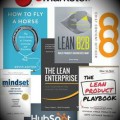Let’s face it. The vast majority of entrepreneurs don’t think they’ll need to do any marketing efforts, so my question may not be relevant to them. A few of them may be right, but only a very few. Those who were brilliant enough to create a disruptive product or service that is a perfect fit with the needs of a large enough market don’t need to put much effort into their marketing initially. The rest of us do. Hence if you’re in the second or third year of your start-up and your hockey stick[1] still doesn’t have much of a handle, it’s a clear indicator that you needed to deploy marketing efforts and need the answer to the title question.
Do I need to do marketing for my start-up?
It would have been nice had someone told me how to know that I needed marketing at the very beginning of my venture you say? So here are a few indicators that show you will need to deploy, at least some marketing efforts, from the get go.
- You have more than a couple of competitors or substitutes in your market
- Your product or service is aimed at other businesses (businesses are not very good at finding even the perfect fit solutions)
- Your product or service is not self explanatory
- Your product or service is luxury priced or high cost
- You are targeting a market where information is not free flowing
There are many other situations but those are the most common ones.
So now that you know you need to do marketing for your start-up, how do you go about defining the pillars of your marketing; your customer segments?
What is a customer segment?
 If you are new to the practice of marketing and you take a look at the definition of a customer segment, it won’t be terribly useful to you at best and may even lead you astray.
If you are new to the practice of marketing and you take a look at the definition of a customer segment, it won’t be terribly useful to you at best and may even lead you astray.
Defining your market segments solely as a group of customers with homogenous characteristics (whichever one you may think of) is not going to help you much in reaching your goals.
You need a purpose
In order for a customer segment to be of use it must be actionable and enable you to achieve whatever marketing, product or business goals you are going after. This entails of course that you are thinking a few steps ahead and define the goals (business, product or marketing) you want to reach in the near future and tactics you are likely to use to reach them.
Making it real
Let’s say your product is a mobile phone controlled smart night light, and you need to figure out what features to put in your mobile app. which controls the light, to maximise your sales. If you treat your early adopters as a segment it will not be very useful unless it so happens that they all have the exact same needs regarding the application. This is highly unlikely as your smart night light may attract initial interest from students, young professionals, parents and other types of customers who happen to be tech savvy. Although they are all your early adopters, their needs regarding the application features and marketing approach will differ greatly.
On the other hand, if your goal is to test a product feature that will not change across market segments, such as an on/off switch on the light, then using your early adopters as a market segment makes complete sense.
Lesson learned
Can your early adopters be treated as a customer segment? The answer is, only if by doing so you can answer the questions that you need addressing at a specific time and place. Most of the time, you will need to refine your segmentation before it is useful to you.
[1] Shape of the revenue curve of highly successful start-ups










